As the decade draws to a close and the 2020s stretch out ahead of us, I thought it would be a good time to reflect back on what’s happened in the wonderful world of family cycling over the past ten years.
When 1st January 2010 dawned the world was certainly a very different place – both for us and for the world of family cycling. Chris and I had two boys aged 3 and 1 years – and to be honest our family cycling had been curtailed at the birth of the youngest as we had absolutely no idea how to cycle with a young baby. Our friend Kathryn (who is a very keen cyclist) had introduced us to rear seats about 2 years earlier. We had enjoyed rides out with the eldest, however we didn’t know anyone riding with two kids. We’d never heard of cargo bikes or trailers, and certainly didn’t see people commuting with their children. Cycling had become something I did without the kids, rather than with them.
2010 – the start of a decade long journey
2010 was about the time we were starting to think about getting a starter bike for our eldest, and we plumped for a very heavy steel freebie from Freegle – complete with stablisers and stickers of planets. We weren’t alone – there were very few people around in 2010 who knew anything about the merits of buying a decently specified, lightweight kids bike. There was really only one major company making them – Islabikes. They’d been founded in 2006 and were using word of mouth amongst keen cyclists with young children to sell their bikes. Some of those early bikes are still going strong today – such as this one that recently passed through Cycle Sprog HQ:
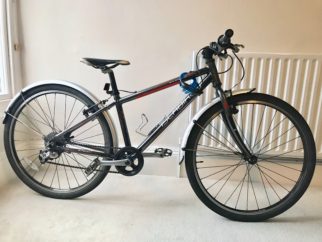
Andy Loveland had also launched Early Rider in 2005, but had not yet scaled up production to the same extent as Islabikes had. The rest of the bike industry were highly skeptical about the market for quality kids bikes. Plus back in 2010 the vast majority of parents would balk at spending hundreds of pounds on a bike for their child. Oh, how times were about to change………
In another development from the start of the decade, which was to go on to fuel the demand for better quality kids bikes, British Cycling launched Go Ride racing in May 2010 in an attempt to encourage more young people into entry-level bike racing. This scheme has grown massively throughout the decade, with Go Ride racing now taking place regularly all over the country.
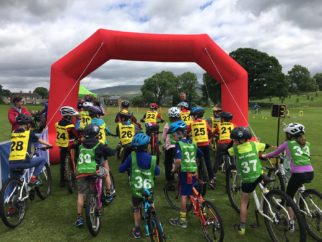
Goodbye stabilisers!
The start of the decade was also the time that balance bikes just started to come into the public consciousness. Like us, the vast majority of parents bought a bike with stabilisers (or found a steep hill and waited to pick up their child at the bottom!). The thought of buying a seperate bike with no pedals was very strange. Of course it’s exactly what our in-the-know-friend Kathryn was doing and our younger Sprog inherited her daughter’s balance bike so we had the benefit of seeing first hand how much more fun a balance bike is than stablisers.
Over the course of the next 10 years balance bikes have become a standing item on the list of “essentials” for toddlers, and many children have grown up blissfully ignorant about the existance of stabilisers.
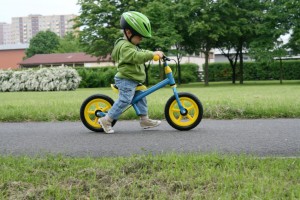
The first three years of the decade were a formative time both for the family cycling industry and for us as a family. Islabikes continued to gain in popularity, with those parents who were in the know raving about them to their friends and family. It was really easy to see the difference between the heavy stabiliser bike that our eldest was struggling to pedal, and the lightweight Islabike Cnoc (without stablisers) that Kathryn’s daughter was zooming around on. It wasn’t long before we were heading to Ludlow ourselves to buy our first Islabike from their showroom (thankfully in the 10 years that have passed it’s now possible to buy Islabikes on-line, and they do popup events around the country to allow test rides).
Whilst our Islabikes Cnoc was great for our Sprog to ride around on at weekends, as someone who hates driving and had cycled everywhere pre-children, the need to be able to transport two children by bike was becoming more urgent. We had managed to find details about child bike trailers (and bought one second hand) and then progressed to a tagalong and a front seat combination.
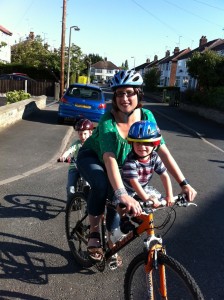
It had been really difficult to find any information about riding with two children, with most advice hidden deep within specialist cycling forums and written in a cryptic, techno jargon way. It was in autumn 2011 that I muttered the words “There really should be a website about cycling with kids, written in a way I can understand” and Chris had replied “Why don’t you set one up then”. It took us about 6 months to get things in place and we launched Cycle Sprog to the world on May 14th 2012.
The 2012 effect
2012 was also a pivotal point for much more impressive reasons! Bradley Wiggins was the first Briton to win the Tour de France, and then just days later started the gold rush that was the London Olympics. Suddenly everyone was cycling mad, and everyone wanted to get out and ride. And everyone wanted a bike that went fast (which means not something that weighs half your bodyweight!) The mainstream suppliers and retailers were slowly starting to see the opportunities in producing quality junior bikes and by December 2012 Evans Cycles in-house brand Pinnacle had released a lightweight kids bike range.
Early in 2013 Frog Bikes launched as a direct rival to Islabikes and since then things have really shifted apace.
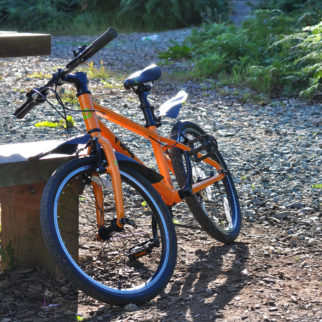
No longer do people think you’re crazy spending a decent amount of money on a quality bike for a child. Parents now realise that trying to ride a bike you can barely move because it’s so heavy isn’t the most fun. An entire generation of kids have grown up riding amazing bikes. They’re confident and passionate cyclists – and those who have taken advantage of British Cycling Go Ride schemes or Bikeability training after often more skilled cyclists than their parents! Virtually every independent bike shop will now stock lightweight kids bikes, be that Frog, Cube, Cuda, Giant or Squish. Most (but not all) bike manufacturers take their kids bike range seriously now, with advances in design and components from adult bikes filtering down into the junior ranges.
It’s taken a number of years to get to that point though. The majority of the early brands launching were children’s bike specialists with most selling direct to the customer. They’d all been founded by people who realised that the mainstream bike manufacturers weren’t providing the decent bikes that kids deserved. Isla Rowntree launched Islabikes when her friends and siblings were coming to her (as a National Cyclocross champion and Head of Bikes at Halfords ) for advice about a bike for their child. Jerry and Shelley Lawton launched Frog Bikes when, over 5 years later, they saw the limited choice for their own kids. Christian Bezdeka and Marcus Ihlenfeld were doing similar in Austria, launching Woom Bikes in 2013.
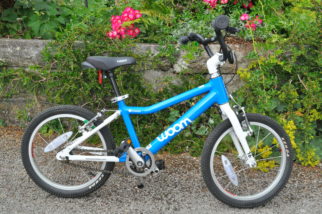
Of course, it was inevitable the rest of the cycling industry would catch up. Following the success of the Pinnacle bikes, in 2014 Evans Cycles teamed up with Sir Chris Hoy to launch the Hoy Bikes range for children (he’d already developed an adult range with them) and in the same year Tandem Group Cycles launched the Dawes Academy kids bike range (now discontinued).
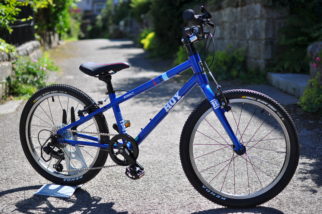
By the middle of the decade there was plenty of choice if you had the cash to spend on a quality kids bike, but if you had a tighter budget the options were mainly second hand or a heavy steel framed “toy bike”.
That started to change when Halfords partnered with Sir Bradley in 2016 to launch the Wiggins Kids Bike range, and they also expand their popular Carrera range (which is now recommended by Bikeability). Tandem Group Cycles launched Squish Bikes in January 2017 and in November 2018 Go Outdoors released their Wild Bike range. Now there’s a good choice of decently specified kids bikes at a lower price point meaning even more families are able to afford a lightweight bike.
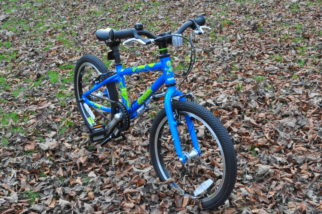
At the other end of the price spectrum, the recent surge in e-bike sales in the adult market has led manufacturers to look to bring that technology to kids bikes. There’s a number of kids electric mountain bikes now available, if you have the cash to spend, but it’s still not legal to ride these on the road under the age of 14.
Personally, as my Cycle Sprogs enter their teenage years I’m struggling to keep up with them on and off road, so e-bikes are certainly looking much more appealing to me!!!
The greening of kids bikes
One of the holy grails of kids bikes has been to develop an offering which takes away the need to keep on buying new bikes as your child grows, which is not only harmful to the environment but time consuming and expensive too.
There are now several iniatives that tackle these problems – bike leasing, bike lending and growing bikes.
The Bike Club have been the most successful of the bike leasing companies, with many parents now choosing to lease over buy a bike – swapping a bike every time their child moves up a size, in return for a monthly payment.
Islabikes are also working on a fully sustainable leasing scheme based on the principles of the circular economy called the Imagine Project, which has recently entered the live trial phase.
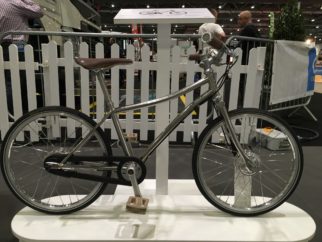
Lending schemes are slightly different, with parents borrowing bikes or family cycling equipment for a few days or weeks to find out if it suits them before deciding to invest. Initiatives lending equipment such as seats and trailers include Bambino Biking in Manchester and the Hackney Family Cycling Library in London.
One of the legacies from the 2014 Tour de France stages in Yorkshire has been the Yorkshire Bicycle Libraries which now have over 60 locations with a fleet of bikes which are available for children and families to borrow for free.
In terms of bike design, there have been a few attempts to design a bike that grows with your child, saving on having to buy a new bike every time they have a growth spurt. None have really gained much traction, until Black Mountain Bikes launched in 2018 with bikes that convert from balance bike to pedal bike as well as have a growing frame that extends the life of the bike.
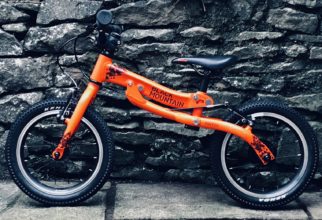
What to wear?
As more kids took to their bikes during this decade, so the demand for clothes, helmets and protection for them to wear whilst cycling has increased. There’s been some kids specific brands launch, one of the most successful being ShredXS with their popular mountain biking collections of jerseys, shorts and gloves.
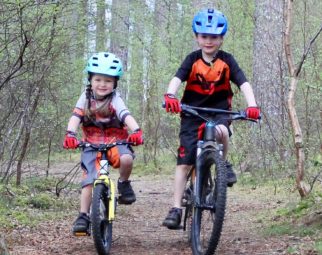
Adult manufacturers have thankfully also caught on that this demand exists, with everything from cycling gloves to yellow jerseys now being available in kids sizes.
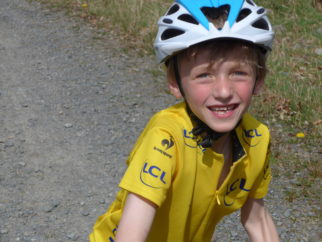
On yer bike
As the decade has progressed, so has the number of families looking to cycling as a way to transport their children. The reasons for this are varied, including environmental, economic and practical (indeed, why sit in a traffic jam in an expensive polluting car when you can ride your bike?) As a result, the number of options for cycling with a young family have increased, with cargo bikes, Follow Me Tandems and bike seats as well as regular bikes all becoming more common at the school gate during the decade.
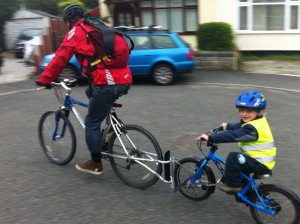
Let’s talk (and share)!
All this growth in family cycling has also fuelled the need for more information, and the popularity of both Cycle Sprog and other family cycling blogs and forums has grown too. As the use of social media has come to dominate our lives this decade this has lead to the chance for people to share knowledge first hand. The Family Cycling UK Facebook Group, which was set up in October 2014 now boasts over 4,000 members all seeking and sharing advice about cycling with young children. The growth in ownership of cargo bikes amongst the groups members in recent years has been one trend I’ve noticed. This was also reflected in Transport for London running a Family Cargo Bike competition earlier this year.
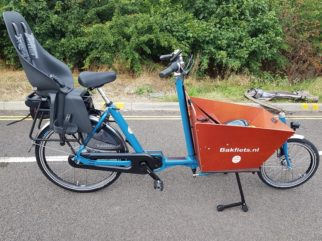
Other more specialist on-line communities have sprung up, such as the Little Rippers FB group for those who enjoy mountain biking with their offspring, the Child Friendly Bike Rides in Yorkshire and the Family Cycling Ireland Group.
There’s also groups for those wanting to buy and sell particular brands, such as the Pre-Owned Islabikes and Pre-Owned Frog Bikes Facebook Groups.
Cycling UK set up their “Family Cycling” specific forum board in 2017 which has proved popular with members. What’s good to see is that there’s also now a lot more chat about bikes and cycling with kids on mainstream parenting websites, plus more of these websites are reviewing quality kids bikes and family cycling equipment alongside car seats, strollers and toys.
Here at Cycle Sprog we’ve seen massive growth over the past few years with parents coming to us from all over the world to read our advice on cycling with kids and reviews of bikes and routes. We’re getting perilously close to having 1 million page views in 2019 alone, up from heady levels of 51,000 page views in our first 12 months! Since we launched we’ve had over 2.1 million page views.
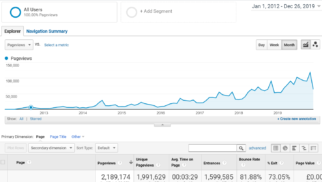
It’s not quite so lonely running a family cycling website these days, and I even belong to a Facebook group with other people doing the same. There are a few in the UK but most are the Canada and US.
There’s also been a large number of inspirational young riders who are getting out there and doing impressive things on their bikes. Some are doing huge distances – in September 2018 Rhoda Jones became the youngest child on record (pending validation) to cycle from Land’s End to John o’Groats – 4 years, 4 months. Her time of 22 days, 3 hours, 26 minutes was narrowly beaten by big sister Ruth (5) who’s the fastest by trailerbike. Or there is 12 year old Hannah Killick who decided to ride the same distance in this years Easter holiday and stopped off to say “Hi” en-route.
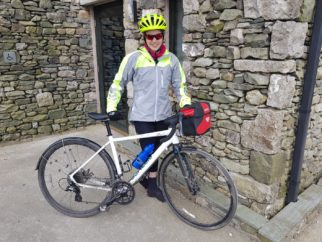
Or there’s Tom Seipp who has ridden an eye boggling number of miles. He was the youngest person ever to ride the double coast to coast (there and back) aged 7 in 2012. Each year he’s gone further, and has ridden routes most adults will never manage, including the Strathpuffer, Highland 550 and this years epic – the 2,745 mile Tour Divide aged 14 years.
There’s the many junior racers, who are pushing themselves every week to gain personal bests or podium positions. A lot have Instagram and Twitter accounts and you can find some of them via who we’re following on our social accounts.
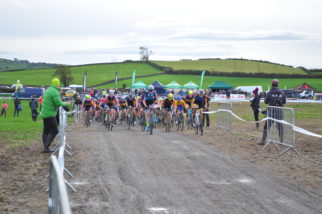
There’s also Cycle Sprogs who share what they’ve been up to at the weekend or during the holidays with us on our Sprog Blog – from racing to family rides, from spectating to bike reviews they’ve been a great inspiration, showing why cycling is such fun.
We’ve also had some brilliant parents blog for us – sharing advice on topics as wide ranging as their favourite family cycling routes (in places as diverse as Yorkshire, Merseyside, The Outer Hebrides, Denmark, The Netherlands and Bali ) or their experiences of campaigning or using cargo bikes.
This increased interest in cycling has also been reflected in the number of kids books featuring bikes. Sir Chris Hoy has written the Flying Fergus range of books, and there’s been a steady stream of new books written each year that are either about cycling, or feature main characters riding a bike.
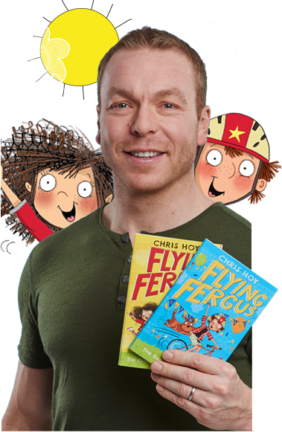
But where shall we ride?
Depending on where you live and what type of cycling you and your Sprog are doing, it’s been a mixed picture this decade. British Cycling have been investing in infrastructure and many regions have had new circuits or velodromes built. Cyclocross has boomed, particularly in the midlands and southwest with brilliantly attended kids racing all throughout the season. Mountain biking has had a real growth spurt, with both the national forests and private companies developing rural and urban bike parks and trail centres.
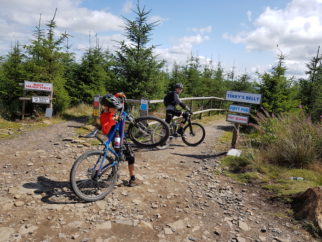
However, there’s one big elephant in the room. Despite everything in this article pointing to growth and development, sadly, on what is the single more important issue, the decade ends exactly as it started – with the UK Government’s ongoing aversion to investing seriously in cycling as means of transport. I could detail all the different instances of government ministers spouting lots of hot air about how important cycling is going to be to tackle climate change / mental health / physical health / traffic congestion / childhood obesity / rising levels of Type 2 Diabetes / the crisis in the NHS / attention levels at school / general health and happiness (delete as appropriate). I could then detail all the responses from campaigning organisations pointing out that this won’t happen without widespread investment in cycling infrastructure, so people (and in particular children) have somewhere safe to cycle away from traffic. I could then detail all the facts and figures they quote about how little Britain spends compared to The Netherlands (and indeed many other places). And I could end by showing you lots of examples of painted stretches of tarmac or white lines which do nothing to make cycling any more attractive as a means of transport.
You get the picture – which is why it’s so important we all keep on calling for more investment and better infrastructure at every opportunity. Joining one of the main campaigning bodies such as Cycling UK, Sustrans or British Cycling is a good way to help do this, as well as becoming active in your local cycling campaigns or writing to your MP and councillors.
Thankfully there have been some green shoots of change, with Chris Boardman being appointed the Greater Manchester’s first Cycling and Walking Commissioner in 2017 where he’s trying to make real change. Several other major cities and regions have also appointing bicycle majors or commissioners. Some London Boroughs have started “Little Holland Schemes” and there’s a growing movement for traffic-free “school streets” in urban areas.
The Scottish Parliament have made more progress than Westminster, and there have been some exciting initiatives north of the border partly helped by the annual “Pedal on Parliament” which has taken place every April in Edinburgh since 2012 demanding wholesale change in the way cycling is funded and viewed politically.
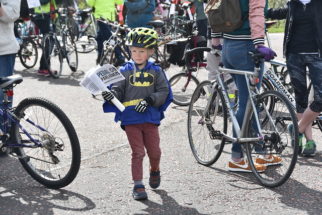
So, as we enter a new decade the stage is set for family cycling to continue to grow. The demand is there. Parents and kids have shown in the past 10 years that they want to ride their bikes. The bike manufacturers and suppliers have stepped up to the mark and delivered a really wide range of kids bikes. Investment in cycling as a sport and leisure activity has delivered some really great facilities. What we need now is the political will to ride this wave, and deliver a cycling infrastructure network that means in a decade’s time Britain can proudly be called a cycling nation – a place where families can ride safely to the local park at the weekend, rather than having to drive, and where children can cycle safely to school each day.
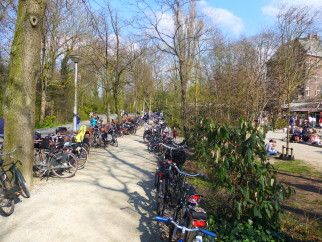
As the decade ends I’d like to say a massive thanks to everyone who has supported us develop Cycle Sprog from a tiny blog into the big website it is today. There’s far too many to mention individually, you know who you are. We’re looking forward to continuing to write about all things family cycling related as we enter the 2020’s. If you’d like to come along for the ride don’t forget to follow Cycle Sprog on Facebook, Instagram and Twitter. You can also sign up for our occasional newsletter.
Happy New Year!
Here’s some of the articles I’ve most enjoyed writing this decade:
- How we became a mountain biking family in just one year
- The Swale Trail, Yorkshire Dales – a family mountain bike trail of two halves
- I’ve finally found out that I’m not weird!
- What if……
- SUCCESS OR FAILURE? The Cycle Sprog experiment draws to a close
- Our family cycling holiday in the French Alps
- Cycling with kids in Portland, Oregon – a mum’s view
- Launch of the Women’s Festival of Cycling 2019
- Cycling with kids can make you feel like one in a million
- Hiring bikes for the family on our Cornish holiday
- Cycling Coast to Coast in Cornwall with kids
- How to hire a kids bike in Amsterdam
- Best children’s books about cycling 1: Picture books for young children
- £13m invested in teaching kids to ride a bike – but where are they going to cycle????
- Cycle licences – a great way to improve safety for our kids?
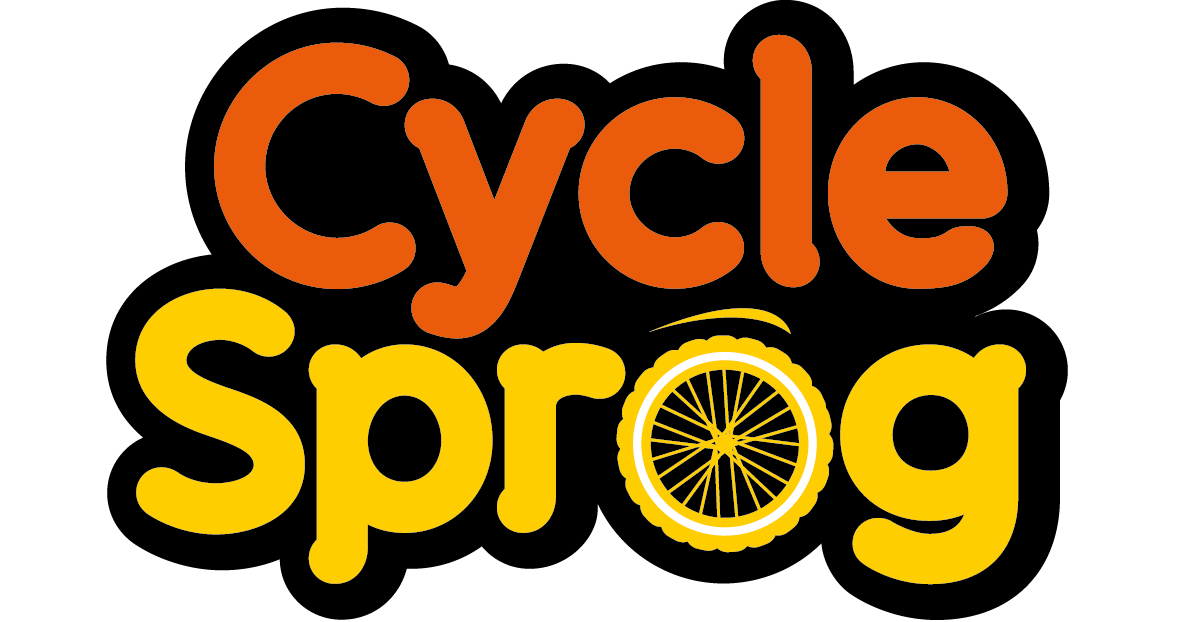
Comments